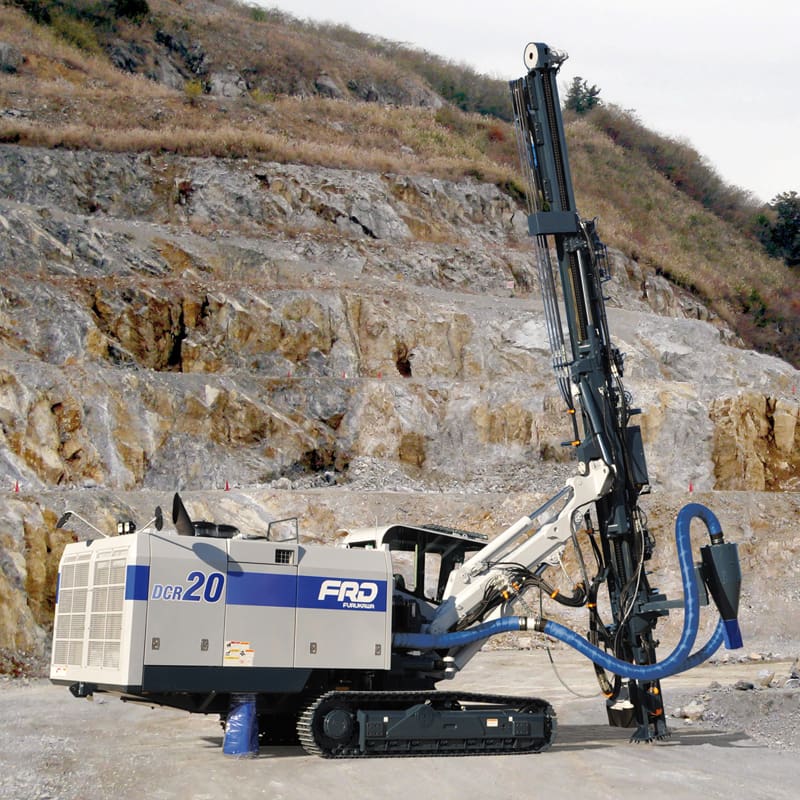What is DTH Drilling?
Down-the-hole drilling (DTH) essentially involves a drilling hammer at the bottom of a drill string. It relies on three elements for drilling holes: bit loading (weight), rotation and air. These active elements combine to be efficient at crushing rock. As the drill string slowly rotates, the drilling hammer is forced into the rock repeatedly. Striking power is provided by compressed air driving a piston inside the hammer.
Where is it Used?
DTH drilling is often used in the mining industry (blast hole drilling), on construction sites, drilling water wells, and in the oil and gas industry.
DTH Advantages
DTH drilling offers several advantages over top-hammer drilling for larger, deeper holes in medium-hard formations. Because the hammer is at the bottom of the hole, power loss is minimal as the hole deepens. That means energy is not lost in the drill string and penetration rates do not markedly decline with depth—provided that back pressure does not rise significantly in the borehole. DTH drilling is most suitable for hole diameters of 4–10 inches, with some exceptions.
Compressed Air Power
The DTH hammer is pneumatically powered, with the compressed air propelling it forward to impact and fracture rock. Compressed air also travels through the drill bit into the hole (air exhaust), which blows the chips and dust out of the hole.
Quieter Drilling
From environmental and social perspectives, DTH is a good option because it produces much less noise and vibration than many other drilling methods. Quieter drilling means it is often the preferred drilling method when used in cities and populated areas.
FRD USA offers Tier IV and Tier III (for Central America/the Caribbean) DTH drills. Learn more here or contact us at 800.358.4476.
